Star Trek: Deep Space Nine is twenty years old this year. To celebrate, I’m taking a look at the first and second seasons. Check back daily for the latest review or retrospective.
Well, at least the second season of Star Trek: Deep Space Nine is experimental. It might not always pay-off, but there’s a clear sense that the show is trying new things, bending various genres to make them fit within the broad outline of a Star Trek show. Necessary Evil was a fascinating attempt to construct a noir episode, while Rivals was a less-than-successful sit-com in space. The Alternate is very much doing “Star Trek as monster movie”, which is surprisingly fun.
To be fair, it’s not a subgenre new to the franchise. Indeed, the first episode of the original show to air, The Man Trap, was essentially a monster horror in space. Still, The Alternate feels a bit more sinister and dark than anything that Star Trek: The Next Generation might attempt. (Schisms probably comes closest, but – even then – there’s no sense that the monsters are stalking the starship. They have to abduct their victims to experiment on them.)
More than that, though, The Alternate is also a fascinating exploration of Odo as a character, looking at the relationship that Odo has with his co-workers and how that is rooted in his relationship with the man who claims to be his “father.”
Although I don’t think the ensemble of Deep Space Nine ever gelled with the same chemistry and charm as the regulars on The Next Generation, working better as clusters and subgroups than as a large collective, I do think the show had more than its fair share of the most compelling lead characters in the franchise. Taken individually, or even as duos, the character here seem a lot more textured and developed than most ensemble players in Star Trek lore.
By this point in the show’s second season, Odo has already established himself as one of the more unique Star Trek regular cast members. In a loose sense, he fits the same archetype as Spock or Data, filling the role of an “outsider”, the member of the regular cast most different from the others. He’s also more fundamentally “other” than Spock or Data. While Spock seemed the only alien on a ship full of humans, he was half-human. Data was designed to mimic humanity so as to better blend in. He even blinks and ages.
Odo, on the other hand, is different. He is liquid. The body we see him in isn’t his default form. He doesn’t have hands or feet or even eyes. As Mora points out on the runabout, when Odo describes his strange reaction to “seeing” the Bajoran scientist, Mora corrects him, “Seen isn’t really an appropriate description. He had no eyes per se.” Odo clarifies, “I was just trying to describe it in simple terms.” Mora elaborates, “He had never perceived anything like us before.”
Not only is Odo dramatically physically different from us, he also perceives the universe in a way that is markedly different from the way we do. He doesn’t have a brain as we understand it. As Bashir points out when the team return from the Gamma Quadrant, he doesn’t have lungs like we do. He might adopt a familiar form in order to make us feel relatively comfortable, and because it’s more practical to hire an actor than create a CGI character, but he is different from us in a fundamental sort of way, one which distinguishes him from Data or Spock.
As Bashir admits at the end of the episode, he has absolutely no idea how Odo works. All he can do is suggest that Odo rest (and only “because it’s hard for a doctor to go wrong with that one”), and hope that the matter is resolved. This isn’t like Geordi being able to tinker with Data on demand, or the way that Spock can engage with his Vulcan culture and practice meditation. Odo stands apart.
And he seems quite content with that. As much as the episode emphasises his physical differences from us, it also makes it abundantly clear that Odo doesn’t want to integrate, he doesn’t want to blend in, to fit in completely among the humanoid inhabitants of the station. To be fair, Deep Space Nine is somewhat ambiguous on that – at least early on. Here, Mora questions whether Odo really doesn’t want to fit on, or whether it’s simply a defensive mechanism – a way of covering for his difficulty blending in.
Mora suggests that Odo’s difficulty engaging with humanoids fuels his sense of isolation. When Odo justifies his dismissal of Quark, Mora pointedly inquires, “Still having trouble with social integration?” When Mora smiles at the nickname “Constable”, Odo is quick to inform him, “It’s a nickname that I barely tolerate.” Mora counters. “It’s the expression of affection that you find difficult to accept.”
To the credit of the show, however, it doesn’t accept this idea as an easy out. There’s no later episode where Odo suddenly decides that he’s entirely happy among the solids, and his ending in What You Leave Behind remains true to this part of his character. It’s a fairly bold direction for a main character in a franchise like Star Trek. You could read it as a conscious decision by the writing staff to remain true to the multicultural premise of Deep Space Nine, where co-existence is not dependent of complete integration.
Still, as much as it respects his self-imposed isolation, The Adversary feels a little awkward around Odo’s decision to stand apart. It attempts to offer a Freudian excuse for Odo’s stern refusal to completely trust the people around him – suggesting that he fear being locked in a cage or shipped off for study somewhere. As much as Odo denies Mora’s assertion about how his colleagues will treat him (“I don’t believe that! you don’t know them!”), the suggestion is strong enough to trigger his transformation into the episode’s monster.
It feels a bit overly simplistic and more than a little judgmental, as if to hint that the only reason Odo remains outside is because he’s afraid. It would seem stronger to suggest, as later episodes do, that Odo decision not to socially engage is one he made on his own merits. After all, Odo remains isolated and apart even after he gains a lot of experience about how “solids” live. Still, there’s a sense that Deep Space Nine is at least questioning the unspoken assumptions of Star Trek.
Indeed, later episodes in this season would see the show explicitly recognising and respecting those people who opted to remain outside the “paradise” constructed by the Federation. It’s hard not to read Odo’s isolation and reluctance to integrate as something of a thematic through-line, an expression of the underlying themes that would fuel stories like The Maquis or For the Cause. “I integrate as much as I want to,” Odo assures Mora.
While the episode hints that he needs a reason to justify that position, it at least respects it. There’s an acknowledgement that Odo is engaging in his own development and soul-searching, and that it’s no less valid because it isn’t expressed in the desire to be more “human.” He simply wants to be more. He wants to discover his roots. While Mora is clearly disappointed that Odo hasn’t integrated better, he is satisfied by the Changeling’s desire to grow. He’s just exploring his own identity. “The exploration of you, what you are, where you came from,” Mora muses, “that’s never far from your mind, is it?”
That says a lot about Odo. Even if the episode is a little hazy on the specifics, it focuses on some broad ideas about Odo’s identity. One of the great ironies of Odo is how rigid and inflexible he is, despite the fact that he’s a shapeshifter. Perhaps that desire to make everything fit in its place reflects his own fluidity. I imagine identity must be particularly important for a creature with no real “face”, with a default form of a puddle of goo.
As such, it feels appropriate that Odo loses all sense of control when it’s suggested that he might not be who he thinks that he is. When Mora suggests that he might be “sleep-shifting”, Odo is horrified. When Mora idly suggests the possibility that it has been happening over an extended period of time, Odo desperately searches for an excuse or a reason. “The gas!” he suggests. “Maybe it was the gas on the planet. It affected all of you, it must have done something to me.” When Mora concedes that it is “a possibility”, Odo grasps it even more firmly. “That has to be it!”
Similarly, the episode even slyly acknowledges Odo’s desire for order. “Wasn’t that pillar over here before?” he asks Dax in the lab. She responds, bluntly, “It was in my way. I had it moved.” It’s a nice way of foreshadowing – along with Odo’s desire for justice – the nature of the Changelings. A desire for order and structure probably makes a great deal of sense for a race who exist in a liquid form. Since all Changelings are familiar with the effort it takes to maintain a form, it makes sense that the Changelings would see shaping the universe into an image conforming to their ideals as an effort worth making.
There’s also a rather nice throwback to that dialogue exchange in Home Front. In that episode, it’s revealed that Dax tends to sneak into Odo’s quarters and move stuff around a couple of centimetres just to mess with her head. It’s not too hard to imagine that Odo’s pointed question about the pillar planted the idea in Dax’s head. It’s a rather nice little reference to a short exchange in an early episode – a nice piece of sly continuity.
It’s also nice to get a bit more insight into who and what Odo is. I can’t help but suspect that this is something that only really happened because Deep Space Nine pre-dated the wave of serialised science-fiction and fantasy like Lost and Battlestar Galactica. In a more modern show, it’s easy to imagine the creative team drawing the mystery out, extending it over a few more years and returning to it time and again.
You could see that happening with the more iconic and popular science-fiction television show which débuted the same year as Deep Space Nine. The conspiracy episodes of the first few seasons of The X-Files were a high-point, suggesting a bigger picture which never quite materialised. The suggestion of substance was so much more satisfying than the actual answers eventually provided. The serialisation of that arc made it compulsive and compelling viewing, and it builds a lot quicker and with a lot more momentum than Odo’s personal history.
At the same time, however, Deep Space Nine might have been slower and more cautious about embracing long-form story-telling, but it arguably offered a much more satisfying experience. We’re still at the stage where it seems the show is reluctant to leave dangling plot threads without offering a “to be continued…” title card promising resolution, but Deep Space Nine will get past that fairly soon.
The key is to balance these deferred pay-offs with a sense of resolution; to ensure that it’s more than just spinning the wheels on an upside down bicycle. The X-Files and other long-form storytelling shows became too obsessed with “big” questions and teasing “important” answers. In its second year, Deep Space Nine was still struggling with the basics of serialised storytelling. However, it might not be a bad thing that the show didn’t grasp long-form plotting as quickly and as readily as The X-Files and later genre shows.
After all, Odo’s answers aren’t quite as distant as they might seem at this point. The Alternate is really the last time we’re teased with a big revelation about Odo which ultimately goes nowhere. It’s pretty great, when you consider how more modern shows tend to draw out these sorts of character developments and arcs, leading to a point where the question looms so very large that it’s impossible to answer satisfactorily.
And that’s really the biggest problem with The Alternate. It doesn’t tell us much. Odo discovers a planet with a monument and some crazy volcanic gases. He discovers a life form which might be distantly related to him. But he gets no real answers. He never discovers whether his people are still alive, or where they might have gone, or whether they are even aware of him. Indeed, The Alternate is quite firm in its refusal to even hint at some sort of progression on Odo’s voyage of self-discovery.
Indeed, the episode is forgotten about relatively quickly. You can probably fit The Alternate into the history of Odo’s people with just a little effort. To be entirely fair, The Search does include a nice visual shout-out, revealing that Odo’s people do like those obelisks. At the same time, it’s never really contextualised. No real effort is made to make the events of The Alternate fit in the version of history suggested in The Search.
The Alternate isn’t impossible to fit with the reveal of Odo’s back story, but there’s no clear sense that the episode was ever really intended to go anywhere or build as part of anything. And that’s not necessarily a massive problem. Had Odo’s back story been drawn out any further, or had more episodes like this used his history as a means of generating plot, then maybe the lack of any concrete answers or advancement would be infuriating.
And it’s easy to forgive the fact that The Alternate doesn’t tell us anything particularly interesting about Odo’s planet of origin because it still offers us a lot more insight into the character himself. Doctor Mora is a character who only appeared twice on Deep Space Nine, but made quite an impression. It’s quite charming that Deep Space Nine had so many members of the guest cast who recurred once or twice but still felt like an important part of the show’s fabric. It’s a shame he wasn’t brought back for Extreme Measures, as Ronald D. Moore and the staff had originally planned.
The original plan had been for Odo actor Rene Auberjones to play Mora (like Brent Spine had played Noonien Soong), but that was vetoed for practical reasons. Instead, Mora is played by James Sloyan. Sloyan is one of the great Star Trek guest stars, and Mora remains his most high-profile guest role. (He was also pretty great in The Defector.) It helps that he looks quite a bit like Rene Auberjones, creating a convincing “familial” resemblance. I especially like the hair, a nice shout-out to The Forsaken.
The Alternate is a wonderful father-son story for Odo, and it works because Mora and Odo are dysfunctional without being completely broken. Mora doesn’t seem like a monster. You can see why Odo wanted out of the lab, but he’s not a mad scientist. At the same time, he is possessive and selfish, but Sloyan plays Mora in such a way that he remains sympathetic. He seems a very lonely old man. “I gave you more than anyone else in my life. You were my life. And then you walked away.” Perhaps Odo emulated more than Mora’s hairstyle, learning from the scientist’s lonely lifestyle. Like father, like son.
When Mora tries to appeal to Odo to come back to his lab, you suspect that he really thinks it’s the best option. When he tries to prey on Odo’s trust (“what other humanoid have you been able to trust except me?”), it seems like an attempt to protect his surrogate son. Mora’s motives are undeniably selfish, but they don’t seem as cynical as you might expect from a mad scientist. He’s more like a parent having difficulty coping with his son’s decision to move on.
His final realisation, when he breaks down on the Promenade, helps make keep him relatable. Sloyan just nails the sense of pent-up guilt that Mora must be feeling, creating the sense that he’s really known what he did all along. This is what it took to make him to confess his shame, to confront his own responsibility for past actions. It’s a lovely moment, and one which feels far better and more sincere than anything in the “father/son” episode from the second season of The Next Generation, The Icarus Factor.
We also get a nice little scene with Sisko and Jake, reminding us that Deep Space Nine really nailed this whole father-son dynamic. There’s a sense that Avery Brooks genuinely relishes the interactions with Cirroc Lofton, and the conversation about Klingon opera is just wonderful. It’s a small moment, but it is absolutely charming. As with with virtually every other Jake scene in the show, it’s nice to see a more human side of Sisko, with Brooks even flashing a wonderfully giddy grin as he inflicts Klingon opera on his son.
Also of note, playing into the show’s multi-cultural themes, Sisko argues that learning about Klingon opera is valid because it broadens Jake’s experience. We get the first real hint here that Jake might not grow up to be a Starfleet Officer. While The Next Generation would subvert Wesley’s career path in the most bizarre way possible (“angry ensign” to “demi-god” has to be one heck of a step sideways), it’s nice to see a lead human character who might not want to grow up to serve.
More than that, though, Sisko espouses the idea of learning about other cultures is an inherently good thing. “Well, first of all, you don’t know what you’re going to be when you grow up. You may discover along the way that you want to be a musician, or you may find yourself among some Klingons in a job somewhere.” It suggests that Sisko is embracing a version of life which isn’t necessarily Starfleet-centric.
The future of Star Trek is a diverse place, and I think Deep Space Nine really embraced that diversity in a way that wasn’t judgemental or anthropocentric. There’s room for shapeshifters who stand apart and the next great human novelist on the same station. While The Next Generation seemed to suggest that Starfleet and Federation values were inherently superior (especially in its early seasons), Deep Space Nine seems to genuinely value differing perspectives and infinite diversity.
Interestingly, while on the subject of Sisko, The Alternate also features a bit of a continuity gaffe where Sisko heavily implies his father is dead. While he doesn’t outright say it, it’s suggested to the extent that the script to Home Front explicitly references the conversation. It’s not a big deal – it’s hardly the biggest continuity mistake in the history of Deep Space Nine – but it is interesting, because it suggests that the characters are still in the process of being defined. (Of course, some – like Bashir – would be going through this revisionist process until the fifth season.)
Like Odo’s quest to find his origins, there’s a sense that the show has a very broad (and maybe even unconscious) idea of where it wants to go, but the specifics are still hazy. It’s amazing how well so many of these early episodes fit with later interpretations of various characters, to the extent that Sisko’s reference to his father here stands out quite a bit.
The Alternate is also interesting because it does all this in the guise of a monster movie. It’s interesting to see Deep Space Nine as a community under siege, with Sisko effectively sealing the station off and Odo closing the promenade. It might have been nice to get more atmospheric shots of the “curfew”, but the dimly-lit promenade evokes the genre well enough. Despite Kirk’s asides in The Conscience of a King, it’s weird to evoke night in outer space, but it helps set the tone for the episode.
Similarly, director David Carson does a great job evoking the “he’s behind you!” mentality of a classic science-fiction b-movie. Both Bashir and Mora are ambushed by a creature which creeps up behind them. The use of a tentacle to attack Bashir also helps set the tone, making The Alternate seem like an homage to a trashy piece of fifties science-fiction. It’s a fun genre to play with, it’s nice to see Deep Space Nine is still playing with relatively novel subgenres.
At the same time, however, there’s no getting around the fact that the monster special effect is a bit naff. An early example of computer-generated imagery, it’s less than convincing. It looks like Mora is about to be eaten by four or five giant pixels. If ever any episode begged for a remaster job similar to the superb work being done on The Next Generation, The Alternate is it. It really looks like something from five or six years earlier than 1994.
Still, there are also a whole host of smaller touches that hold up rather well. I like, for example, Odo’s flirtation with “humanoid death rituals.” He remarks that death offers a unique insight into many alien cultures. “Some species burn their dead, others pack them in blocks of ice. Some even surround themselves with the company of family corpses. But the Ferengi ritual of chopping up their loved ones and selling them? I find that irresistible.” It’s a nice shout-out to how Star Trek often develops alien races by exploring their death customs. (The Klingons in Heart of Glory, the Ferengi in The Nagus.)
Similarly, we get a sense here that Quark likes Odo (or is willing to admit that he likes Odo) a lot more than Odo is willing to concede in return. The pair have a delightfully antagonistic relationship, but there is a sense that some affection does underpin it. Quark might be trying to distract Odo from his investigations by offering Mora a drink, but it’s still a sweet gesture for a profit-hungry alien. As Mora points out, before Odo cuts him off, “I know that he was trying very hard to present you in a positive light to someone he thought was important to you, and you responded with–“
One of the nicer aspects of the dynamic between Quark and Odo is the way that show refuses to ever allow the pair to become too sweet or too friendly. It is clearly reciprocal, but Quark is very clearly more open about that than Odo. When Odo does Quark a favour (as in Crossfire or The Sound of Her Voice), he’s a lot less willing to admit it than Quark is. It’s a dynamic which remains consistent – like a lot of Odo’s characterisation – up until What You Leave Behind.
The Alternate is a great little episode, one that holds up remarkably well.
You might be interested in our reviews of the second season of Star Trek: Deep Space Nine:
- The Homecoming
- The Circle
- The Siege
- Invasive Procedures
- Cardassians
- Supplemental: The Never-Ending Sacrifice by Una McCormack
- Melora
- Rules of Acquisition
- Necessary Evil
- Supplemental: Terok Nor #0
- Second Sight
- Sanctuary
- Rivals
- The Alternate
- Armageddon Game
- Whispers
- Paradise
- Shadowplay
- Playing God
- Profit and Loss
- Blood Oath
- The Maquis, Part I
- The Maquis, Part II
- Supplemental: The Maquis – Soldier of Peace
- The Wire
- Supplemental: A Stitch in Time by Andrew J. Robinson
- Crossover
- Supplemental: Mirror, Mirror #1 – Fragile Glass
- Supplemental: The Next Generation – Dark Mirror by Diane Duane
- The Collaborator
- Tribunal
- The Jem’Hadar
Filed under: Deep Space Nine | Tagged: Alternate, Bajoran, Benjamin Sisko, Cardassian, deep space nine, Ferengi, Ira Steven Behr, Jake Sisko, Kira Nerys, Man Trap, MORA, Odo, Quark, Recreation, Sisko, spock, star trek, Star Trek Next Generation, star trek: deep space nine, StarTrek |















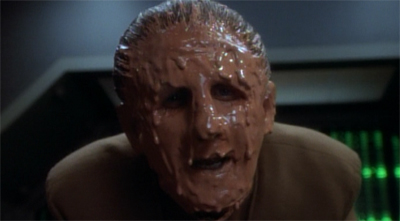
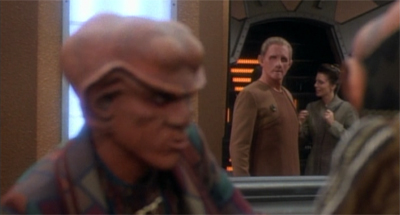
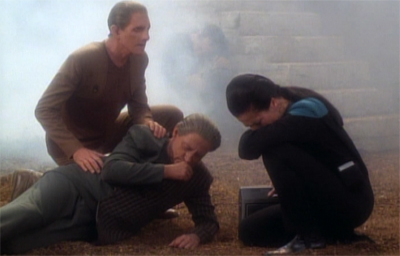
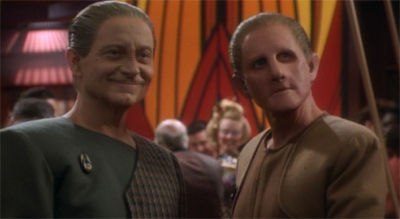




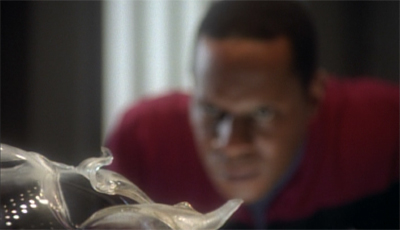
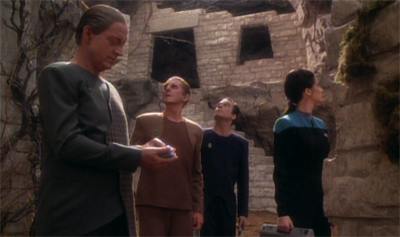

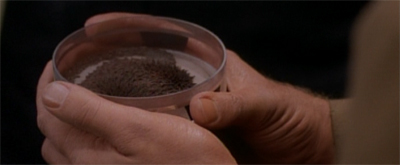
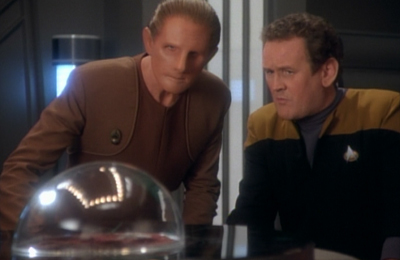
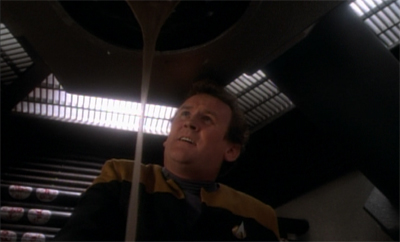


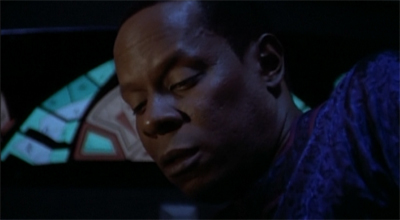


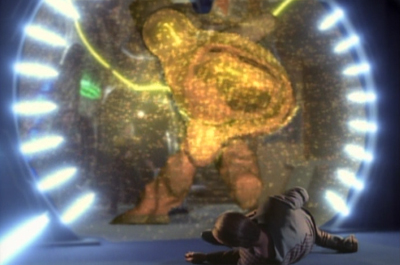






A question. Since before your sun burned hot in space and before your race was born, I have a question…;)…
When they removed the obelisk did that cause the planet to shake? I’ve never been sure.